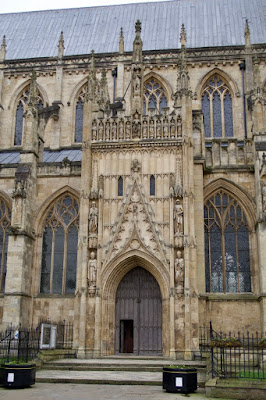In February I went up into the Peak District to go for a run and I found myself heading towards the Dark Peak and the Snake Pass. It was a beautiful morning and as I drove past Ladybower Dam there was a bit of low mist hanging over the dam and it looked beautiful if a little cold.
 |
| Ladybower Dam |
I parked the car where the Pennine Way crosses the road and set off northwards on the trail towards Bleaklow. This is one of the most well known trails in the UK stretching from Derbyshire up to the Scottish Borders. It is a fairly popular trail and even at this early hour on a weekday in February there were several cars already parked at the trail crossing. It was quite cold and the ground was frozen which made for a nice solid footing despite the occasional ice that could be a little treacherous.
 |
| The Pennine Way north from Snake Pass |
The trail crosses fairly difficult terrain being a peat moorland with frequent drainages that cut through the peat bogs. That being said the trail is very well maintained and it forms an easy path through the moor. I was surprised to find some sections paved with massive flagstones.
 |
| Paved Trail |
I had heard of the many aircraft wreckages in the Peak District and I knew there was one nearby this section of trail on a hill called Higher Shelf Stones. I decided to take a look and so a couple of miles or so up the trail I headed off trail to the nearby summit of the hill. Leaving the trail it then became clear what a difficult terrain this moorland is to navigate. A low brush of heather and grasses cut by drainages with muddy swampy bottoms.
 |
| Higher Shelf Stones |
The plane wreck on the top of Higher Shelf Stones was of an American B-29 Superfortress. Quite a big plane, same model as the Enola Gay which dropped the atomic bomb on Hiroshima. It crashed in November 1948 while on a short 25 minute flight from Lincolnshire (Scampton) to Liverpool (Burtonwood). It was apparently very foggy and they must have been very unlucky as the crash site is right at the top of Higher Shelf Stones which itself is not a particularly high mountain. Anyway all 13 crew members were killed and the wreckage was strewn over the top of the hill.
 |
| The Crash Site |
I was surprised how some 72 years later there is still a lot of wreckage at the site. Lots of aluminium body and then the more massive engine pieces. It was strange to see so much metal just lying around at the top of the hill. There was a marker identifying the site on a metal plaque and there were signs of recent memorials with a group of red poppies and small wooden crosses. Apparently every year there is a small memorial service at the site.
 |
| Memorials at the Crash Site |
There is no significant pathway to the site as far as I could see. It just requires a scramble up the side of the hill. On the way back down I took a slightly different route down towards the Pennine Way Trail and rather quickly got disoriented in the bottom of a gully. I knew that somewhere to my east I would encounter the trail but it just goes to show how quickly one could become lost up there even on a clear sky day.
 |
| View over the west side of the hill |
Looking back at the hill of Higher Shelf Stones you realize that the crash site was so close to the top of what is really just a very modest hill. It must have been very unlucky for an aircraft to hit near the top. If they had been only a few feet higher they would have been looking down onto the valley and Manchester below.
Once back on the trail I turned back south to the road and to my car. One of these days I should do the entire way but that is 268 miles and I am not sure I am up for that anymore.
As usual there are more photos here.








































